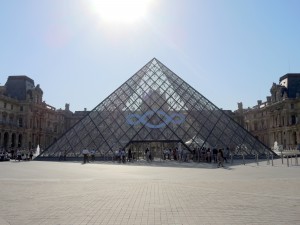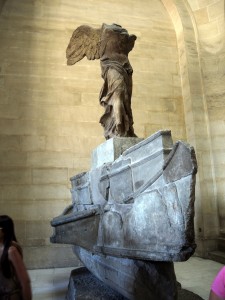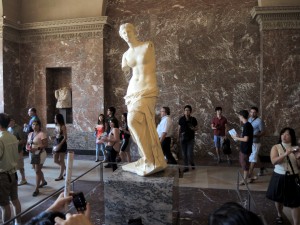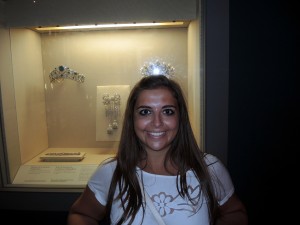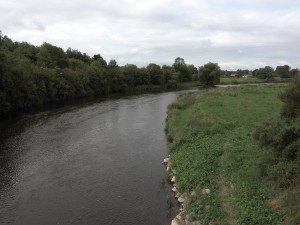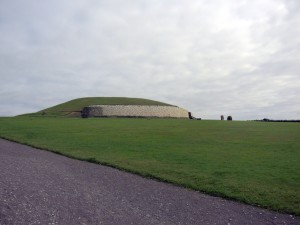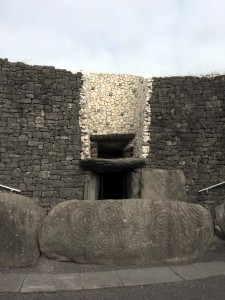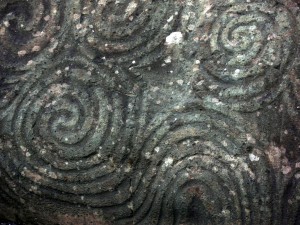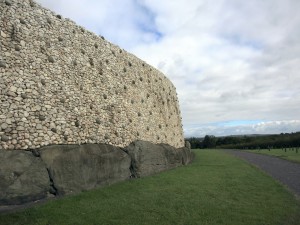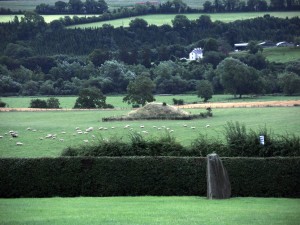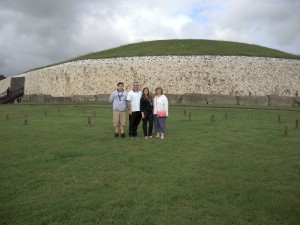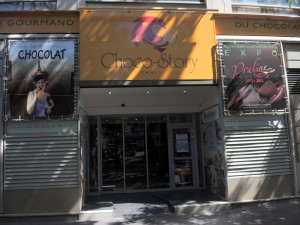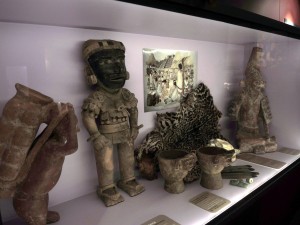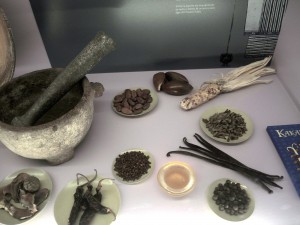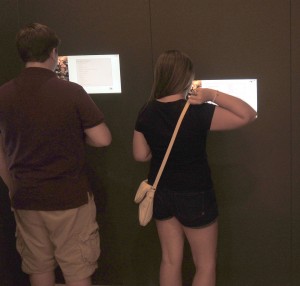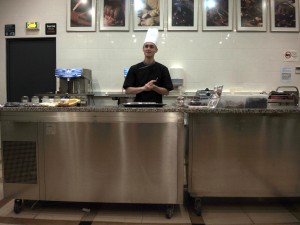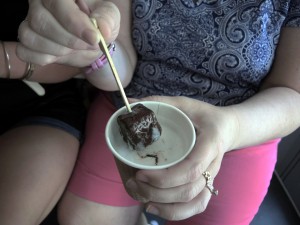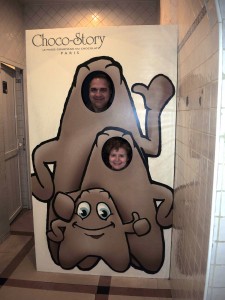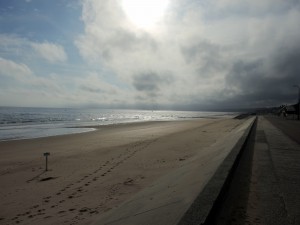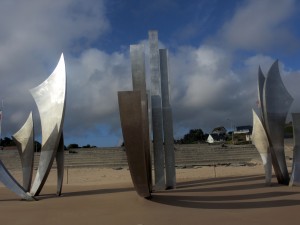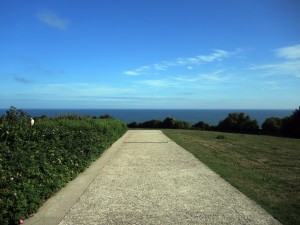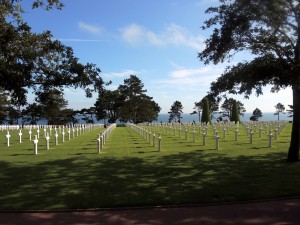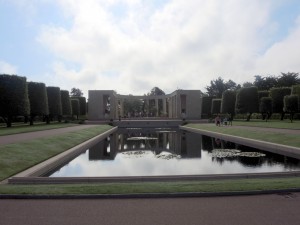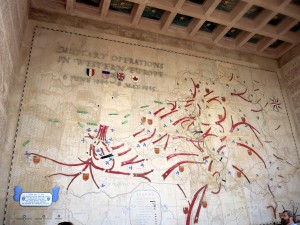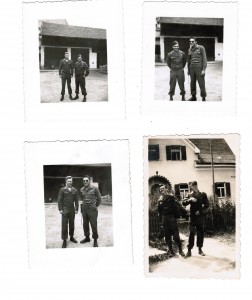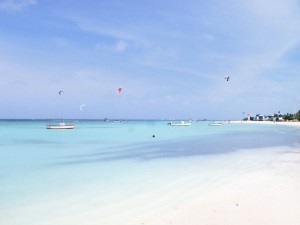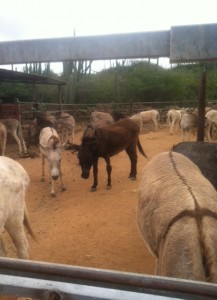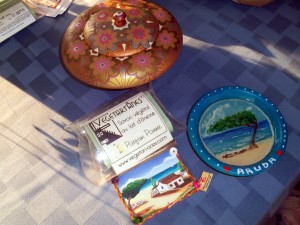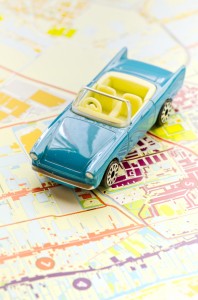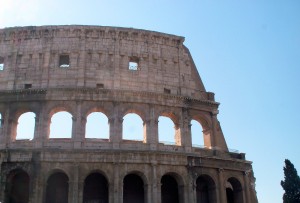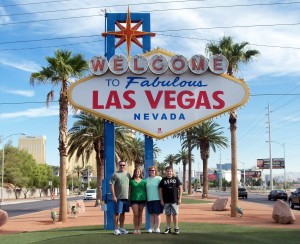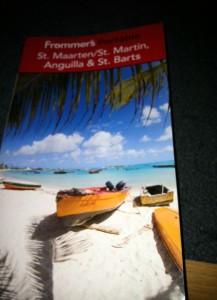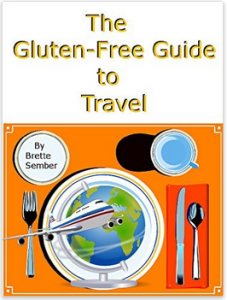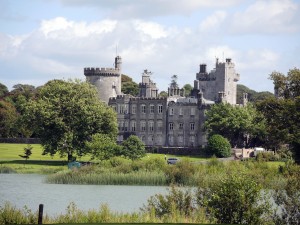 Ireland is populated with incredible castles almost everywhere you turn. There are tourist attractions (like Blarney Castle which we visited), castles people actually still live in and ruins just sitting in fields. “Yeah, that’s the castle in my backyard.” I think that if you live there you are immune to their magnificence, their stories, and their draw. I live near Niagara Falls and while I can appreciate its power and beauty, it is nothing I wonder at. Since I don’t happen to have a castle in my backyard, we spent a lot of time in Ireland in castles. There are big castles, small castles, dilapidated castles, and luxurious castles to choose from. While I knew we would be tromping through
Ireland is populated with incredible castles almost everywhere you turn. There are tourist attractions (like Blarney Castle which we visited), castles people actually still live in and ruins just sitting in fields. “Yeah, that’s the castle in my backyard.” I think that if you live there you are immune to their magnificence, their stories, and their draw. I live near Niagara Falls and while I can appreciate its power and beauty, it is nothing I wonder at. Since I don’t happen to have a castle in my backyard, we spent a lot of time in Ireland in castles. There are big castles, small castles, dilapidated castles, and luxurious castles to choose from. While I knew we would be tromping through
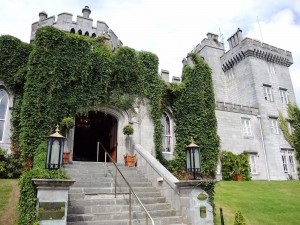
Entrance
plenty of them, what I really wanted was to sleep in one. I might not have Rapunzel’s hair to let down, but what girl didn’t grow up fantasizing just a wee bit about handsome princes, drawbridges, and turrets?
Hello Dromoland
We decided to stay at Dromoland Castle in County Clare outside Newmarket-on-Fergus. This is in southwest Ireland. It is slightly in the middle of nowhere, but the middle of nowhere is quite relative in Ireland
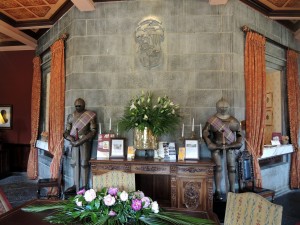
My friends in the lobby
since everything is so close together. It’s located near enough to the Cliffs of Moher, the bogs, the Burren, and Limerick to make it a jumping off spot for those places. It’s also located near the tourist craziness of Bunratty Castle, a Disney-fied version of castle life (we avoided this stop!).
Our GPS had a little trouble finding Dromoland, but eventually we pulled into the driveway, which winds its way past the gates, by an abandoned guard house, and through a green golf course, past a small lake and then – gasp – in front of you is a huge, gray,
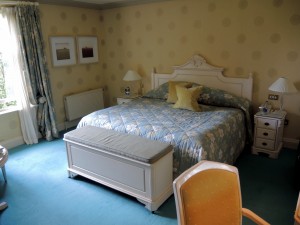
One of our bedrooms
imposing castle. It’s everything you could imagine a castle to be, with turrets and huge stone blocks, sitting on a giant estate. As you drive closer you find yourself asking in wonder, “Am I really going to stay HERE?”
You pull the car up to the imposing steps at the entrance and a friendly gentleman in a morning coat rushes out to unload your bags and welcome you. He shook hands with all four of us, even my teenage son, and managed to contain himself at the sheer ridiculous volume of our luggage. A
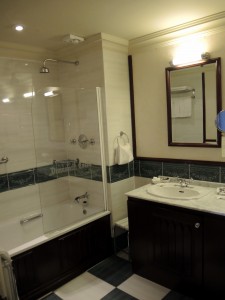
Bathroom
walk up the steps brings you face to face with the huge wooden double doors that look like they’ve kept out Attila the Hun. Once through the doors, two suits of armor let you know you are indeed in a castle. The lobby was small but regal, with a huge table with a guest book, a few chairs and lots of red. We found the desk staff to be friendly and welcoming.
The Rooms
As you head to your room, you leave the definitive castle feel of the lobby and enter hallways built at odd angles with steps up and down at unexpected places. It’s clear the whole place has been retrofitted to meet modern expectations. When the door swung open on one of our two connecting rooms, I caught my breath for a moment. There no stone walls with torches here. Instead, you find yourself in a large, comfortable room that feels
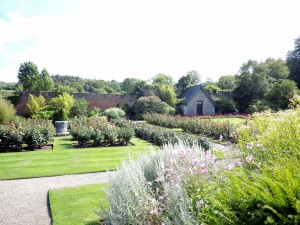
The gardens
elegant, regal, and comfortable. Since I am a girl of the 80s, I was enchanted with the pastel color scheme, including the creamy white furniture, delicate wallpaper and soft draperies. A dressing table that had electric outlets conveniently located with it made getting dressed a real joy. There was also a sitting room and a large armoir in addition to the bed, nightstands, and a bench. There are no TVs.
Our windows looked out on the lake. The bathrooms were huge and thoroughly modern with double sinks, towel warmers, and marble. This may have been the most comfortable place we stayed in all of Ireland. The beds were perfect, in contract to the boxes
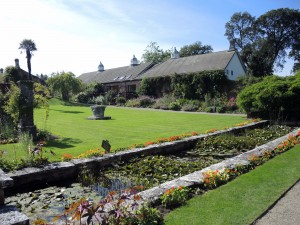
More gardens
of plywood we encountered elsewhere.
There was no air conditioning, but with the windows cracked just a bit (no screens though!), we were completely comfortable on our August stay. A lovely little breeze brought us the perfect amount of coolness to feel comfortable. I also suspect the thick stone walls keep the inside quite cool.
Turn down service involved chocolates (by this point I was over the moon) and a little engraved card reading “In Ireland there are no strangers, only friends you haven’t met before.” That is precisely how this room made me feel
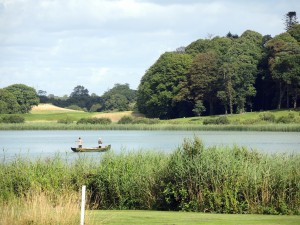
The lake
– welcomed, cherished and pampered.
The Grounds
While the rooms were enough to make me want to stay inside, the lure of the grounds got me on my feet. The castle is surrounded by acres and acres of lawns and woodlands for guests to explore. While the golf course (with a little putting green available for guests at no charge) takes up a lot of space, it felt like a tiny fraction of the estate. We wandered to the walled rose garden which had a water feature, a pergola,
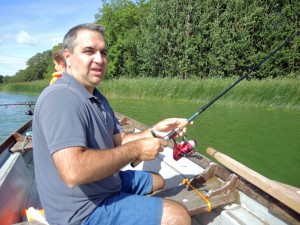
What fish?
lawns, and flowers. It was peaceful and fragrant, a place to linger.
Our next adventure involved the lake. The castle has rowboats, life jackets, and fishing poles available for guests at no charge. It was a tad inconvenient to have to walk over to the golf course clubhouse to get the equipment and the go-ahead to take a rowboat (can you tell by this point I truly felt like a princess – why couldn’t my footmen handle this terribly inconvenient chore?) then we headed back to the lake. The rowboats were
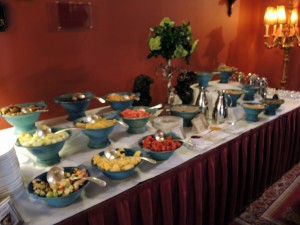
Breakfast
quite large and our family of 4 fit well. My husband used to row crew, so he was quite comfortable behind the oars, rowing us all around the lake. The staff assured us the lake was stocked with fish, but had no bait for the poles, only lures called “spinners.” We dropped our lines throughout that lake and didn’t get a single bite, but it was simply perfect to be floating on a row boat on a quite, glassy lake with this huge castle looming over us. A few swans floated silently, avoiding us at all costs. We happened to go boating in the late afternoon when
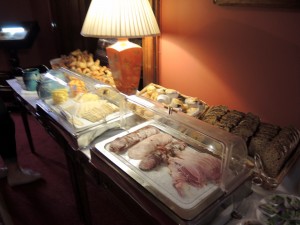
More breakfast
Ireland becomes oddly warm (dare I say almost hot) for a few minutes between 4 and 6 pm in the late summer, so we enjoyed our quiet time floating in the warm sun, knowing we were going to be sleeping in a castle.
The castle provided us with a map of the grounds, so we couldn’t resist heading out into the woods to look for the small Roman temple, lily pond, and river. The only thing that disappointed was the river which was mostly a dried up ditch. We passed some people taking archery lessons
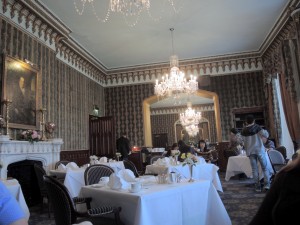
Dining room
and a family heading out for a falconry experience (we did this elsewhere in Ireland and I’ll be writing about that separately). Skeet shooting and horseback riding are also available. The castle has a fitness center in the golf club with a pool, but we were too lazy to have to walk across the grounds to use it.
The gift shop was a major disappointment. They had a few golf shirts with the name of the property on them, a few baby items, some books, some candy and that was about it. I’m not a millionaire who is 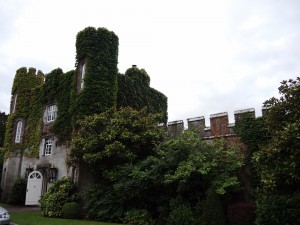 jaded about staying at 5 star properties so I was really hoping to buy something with the castle logo on it, but clearly that marks me as “not one of us.” (I did smuggle home the paper coaster in my room that has an outline of the castle with its name).
jaded about staying at 5 star properties so I was really hoping to buy something with the castle logo on it, but clearly that marks me as “not one of us.” (I did smuggle home the paper coaster in my room that has an outline of the castle with its name).
Breakfast
Breakfast was included in our stay (as it was everywhere we stayed in Ireland). We wound our way through many hallways with velvet wallpaper to enter a very formal and imposing dining room with crisp linens, heavy wallpaper and draperies. We were carefully scrutinized by the members of the
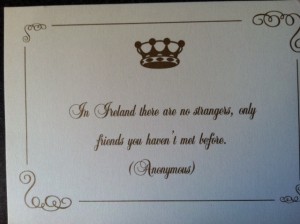
From turn down serivce
Butler family who hang on the walls in portraits, the ancestors who owned Dromoland.
As in much of Ireland, the waitstaff was from other countries (often Poland) imposing a language barrier in a country where you wouldn’t expect one. We found the waitstaff to be a little stiff and unfriendly here. Breakfast was a buffet of fruits, meats, cheeses, and pastries with hot items made to order from the menu (also included). Service was a bit slow we felt. The food was good.
We were sad to pack our bags and leave Dromoland. It’s a perfect place to go and stay for a few days to simply relax. It is not an ideal location as a base for
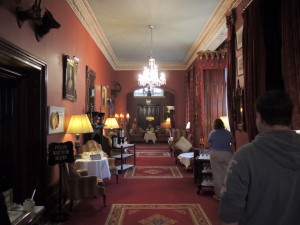
Hallway
sightseeing, but staying in a castle is definitely a dream come true. I’ve saved the sticker shock for last. Two rooms for one night with breakfast included cost us $1274 total. Certainly not a bargain, but for a once in a lifetime experience, it was worth every penny.
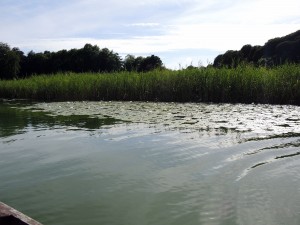
More from the lake
Ireland is populated with incredible castles almost everywhere you turn. There are tourist attractions (like Blarney Castle which we visited), castles people actually still live in and ruins just sitting in fields. “Yeah, that’s the castle in my backyard.” I think that if you live there you are immune to their magnificence, their stories, and … Read more →
 Mona Lisa is impossible to get near unless you prepared to just push your way forward through a room that is wall to wall bodies. The sheer number of people all trying to get to the same place you’re going makes it an unpleasant experience.
Mona Lisa is impossible to get near unless you prepared to just push your way forward through a room that is wall to wall bodies. The sheer number of people all trying to get to the same place you’re going makes it an unpleasant experience.
